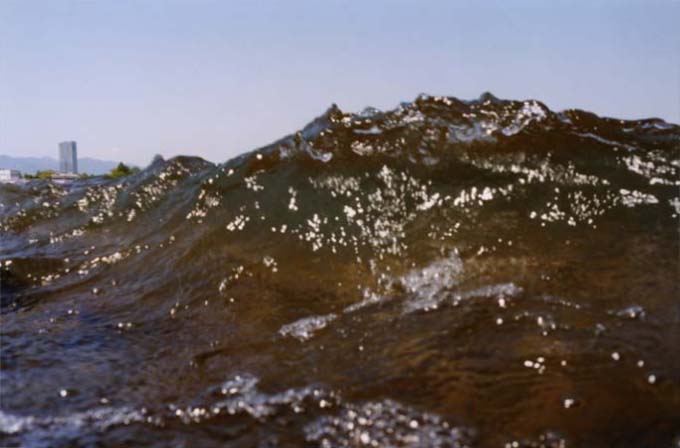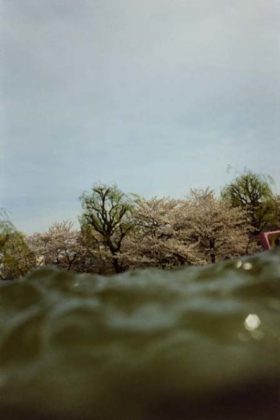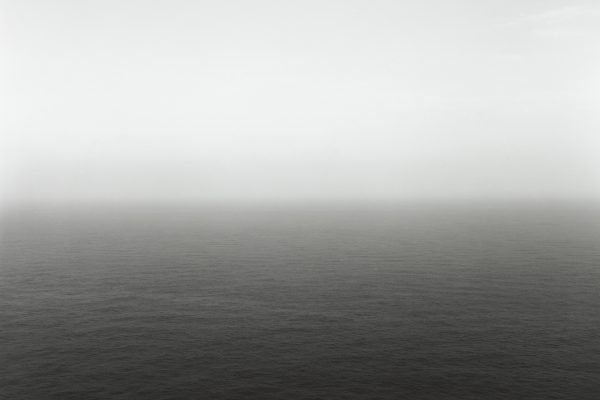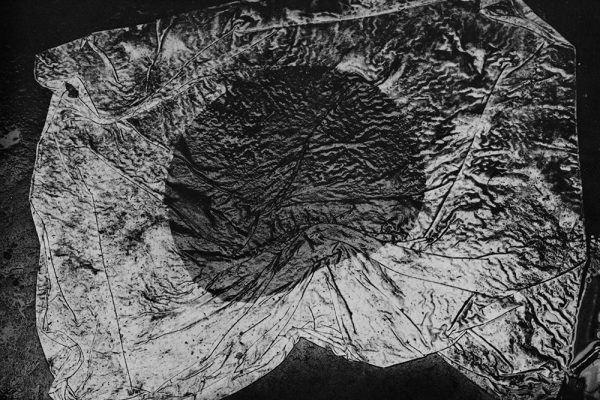Recently someone asked me about Narahashi’s series “half awake and half asleep in the water” and this reminded me that I was looking for publications with the series last year in Tokyo.

Asako Narahashi: Bentenjima, from the series: ‘half awake and half asleep in the water’, 2001
I am very fond of this series which was photographed by Asako Narahashi at several places around Japan in 2000-2003. The curator Michiko Kasahara (today working at the MOT) was instrumental in promoting the series when she included the series “half awake and half asleep in the water” in the exhibition Kiss in the Dark: Contemporary Japanese Photography.

Asako Narahashi: Zeze, from the series: ‘half awake and half asleep in the water’, 2005
The title of the series […] is very cleverly expressed. Her works, while betraying the stereotyped images of resort areas, somehow make visible as a shared recognition the image of the sea that people embrace. Therein, an uncomfortable felling like seasickness and a pleasurable feeling of floating and entrusting yourself to the sea lodge side by side.[…] They call forth an ambivalent feeling.
[Quote: Michiko Kasahara: Kiss in the Dark. Tokyo 2001]

Momochi, from the series: ‘half awake and half asleep in the water’, 2003
Not in the water, but the water´s edge. The resulting photographs were of a sort that I couldn’t tell wether they were not wanting to go over to the other side (= other world), but standing on this side (= this world) and peeping over a the other side, or looking over at this side from the other side.
[Quote: Asako Narahashi]

Asako Narahashi: Ueno, from the series: ‘half awake and half asleep in the water’, 2003
By the way, besides being published in group exhibition catalogues some images from “half awake and half asleep in the water” are included in Narahashi´s book “Funiculi Funicula. Photographs 1998-2003”, Tokyo 2003, and the series is very well printed in the exhibition catalogue “Imagine”, Tama City Cultural Center 2003.
———
Recommended books:
Asako Narahashi: Funiculi Funicula. Photographs 1998-2003
Michiko Kasahara: Kiss in the Dark: Contemporary Japanese Photography

















